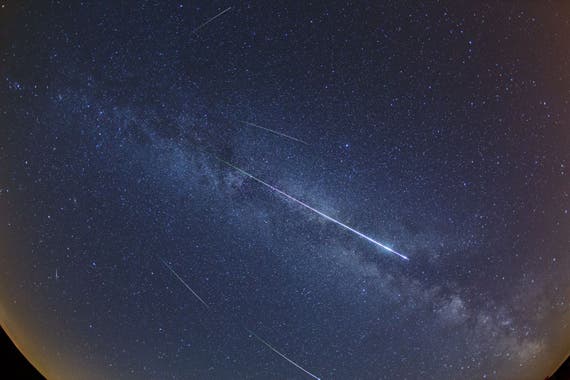
Since last Sunday, Halley’s comet offspring have been swirling through the night sky delighting star gazers all around the world. This coming weekend, however, the Orionids will be at their peak and full splendor – your definitely don’t want to miss it!
This time of year, the moon sets at about midnight, which offers more time for catching shooting stars in the darkness. This couldn’t come at a better time for the Orionid meteor shower, which will reach its peak activity in the post-midnight hours of October 21 and 22. Predicting the moment or even the hour where the highest density of meteor debris will enter Earth’s atmosphere is an extremely difficult feat for astronomers, but all the better. It’s the perfect pretext for you and your friends or family to lean back and enjoy the spectacle all night long. Enthusiasm is a great fuel for burning the midnight oil in expectation of the night sky climax.
The shower originates from the Halley comet, and has its name from the constellation in the sky where it’s easiest to spot – Orion the Hunter. The meteors are particularly fast – swirling at up to 66 kilometres per second – and can be spotted in a yellow or green color, depending on atmospheric conditions. Anyway, be sure to leave the city and head from a spot where the skyline is clear – you don’t need any telescope to enjoy this awesome astronomical event. Just a fine dispositions and great company.
Was this helpful?



